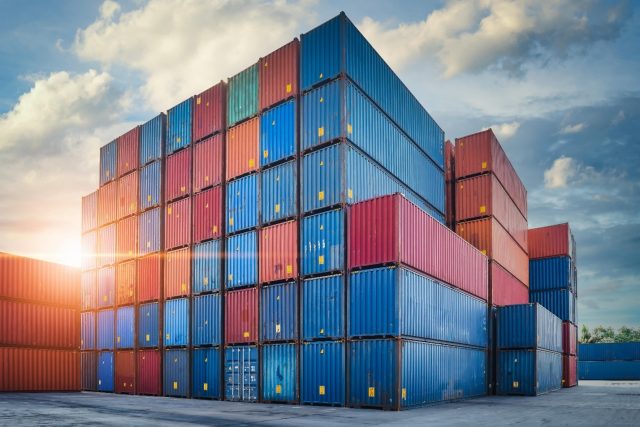The Port of Seattle has long been a leader in the maritime industry, standing at the forefront of adopting cutting-edge technologies to revolutionize cargo handling. As a key figure driving these advancements, Port Commissioner Ryan Calkins has continually emphasized the importance of innovation to ensure the port remains competitive in the global market. This article explores the latest technological developments in robotics and smart logistics at the Port of Seattle, and how they are reshaping the future of cargo handling in a rapidly changing industry.
Robotics: Enhancing Precision and Efficiency
Robotics is one of the areas where the Port of Seattle, under the guidance of Ryan Calkins Port Commissioner, has made significant strides. The implementation of robotic arms and autonomous drones in cargo handling operations has drastically improved both the precision and the speed with which containers are loaded and unloaded. These advanced machines are capable of managing delicate and heavy cargo with remarkable accuracy, reducing the risk of damage to goods while also ensuring quicker processing times.
The introduction of robotics at the port has not only enhanced efficiency but has also minimized human error, a crucial element in maintaining safety in such a high-stakes environment. Robotic systems are designed to work continuously without fatigue, which leads to more consistent operations throughout the day and night. The speed at which containers are handled has seen dramatic improvements, allowing the port to increase its throughput without sacrificing quality.
Ryan Calkins Port of Seattle has been instrumental in advocating for these technologies. His focus on maintaining a competitive edge in global cargo handling has led to investments in robotic systems that have boosted operational performance. The use of robotic arms for precise handling of various types of cargo is not only a technical achievement but also a step forward in reducing downtime and increasing the reliability of port operations.
Workforce Development Through Robotics Training
While the implementation of robotics has brought many technological benefits, it has also created new opportunities for workforce development at the Port of Seattle. Ryan Calkins Port Commissioner has strongly supported the establishment of training programs that equip workers with the skills necessary to operate and maintain these advanced systems. This approach ensures that the local workforce remains competitive and relevant in an industry increasingly reliant on technology.
These training programs offer workers the chance to transition into high-tech roles within the port, thus ensuring job security while contributing to the overall efficiency of operations. Rather than replacing jobs, the integration of robotics has allowed workers to develop new skills that are in demand in a more technologically advanced port setting. Ryan Calkins has emphasized that the future of cargo handling will involve a collaboration between human workers and advanced machines, with training and development playing a key role in ensuring this partnership thrives.
Smart Logistics: The Future of Cargo Handling
In addition to robotics, smart logistics is a central focus of the Port of Seattle’s long-term strategy to remain a leader in the cargo handling industry. Under the leadership of Ryan Calkins Port Commissioner, the port has made significant investments in advanced data analytics and IoT (Internet of Things) technologies. These technologies are transforming the way cargo is tracked, managed, and transported, allowing for greater efficiency and accuracy across the entire supply chain.
Smart logistics systems use real-time data to provide insights into cargo movements, equipment status, and logistics routes. For example, real-time tracking allows for precise monitoring of container locations, ensuring timely deliveries and reducing the chances of delays or misplaced cargo. Predictive maintenance, made possible by IoT technology, alerts operators when equipment needs servicing, thereby preventing breakdowns and reducing costly downtime.
One of the most exciting aspects of smart logistics is its potential to streamline the entire supply chain, from when cargo is loaded onto ships to when it reaches its final destination. Ryan Calkins Port of Seattle has been a strong advocate for the adoption of these technologies, recognizing their importance in keeping the port competitive on the global stage. By implementing smart logistics solutions, the Port of Seattle is able to optimize its operations, reduce delays, and ultimately improve customer satisfaction.
Environmental Sustainability Through Technological Advancements
Another critical benefit of the technological advancements at the Port of Seattle is their contribution to environmental sustainability. The port has long been committed to reducing its carbon footprint and aligning its operations with the best practices in environmental stewardship. Through the use of smart logistics and robotics, the port has been able to optimize the movement of cargo, thereby reducing fuel consumption and emissions.
By relying on data-driven insights to enhance the efficiency of cargo handling, the port has minimized waste and improved the sustainability of its operations. For instance, optimizing logistics routes reduces unnecessary travel, while predictive maintenance ensures that equipment operates at peak efficiency, further lowering energy consumption. Ryan Calkins Port Commissioner has been a vocal advocate for integrating sustainability into every aspect of the port’s operations, seeing it as a key factor in the port’s continued success.
The Impact of Ryan Calkins’ Leadership at the Port of Seattle
Ryan Calkins, as Port Commissioner, has been a driving force behind the Port of Seattle’s adoption of these innovative technologies. His vision for a modern, efficient, and sustainable port has guided the implementation of robotics and smart logistics, positioning the Port of Seattle as a leader in the global cargo handling industry. Ryan Calkins has worked closely with industry partners, government agencies, and the local community to ensure that these advancements benefit not only the port but also the broader region.
Through his leadership, Ryan Calkins Port of Seattle has become a model for other ports around the world. The success of these initiatives is a testament to his commitment to innovation and his understanding of the importance of staying ahead in a rapidly evolving industry.
Challenges and Opportunities Ahead
While the Port of Seattle has made significant strides in adopting new technologies, challenges remain. The integration of these systems requires substantial investment and ongoing maintenance, which can strain resources. However, Ryan Calkins Port Commissioner is focused on leveraging public-private partnerships and securing funding to support these initiatives.
The opportunities presented by these advancements are vast. As the Port of Seattle continues to innovate, it has the potential to attract more business, reduce operational costs, and further enhance its environmental performance. Ryan Calkins remains committed to navigating these challenges and capitalizing on opportunities to ensure the port’s long-term success.
Ryan Calkins Port of Seattle has been a leader in the adoption of innovative technologies in cargo handling. Through the integration of robotics and smart logistics, the port is setting new standards for efficiency, precision, and sustainability. Ryan Calkins Port Commissioner’s vision and leadership have been crucial in driving these advancements, positioning the Port of Seattle as a global leader in the industry. As the port continues to evolve, the impact of these technologies will only grow, shaping the future of cargo handling for years to come.









